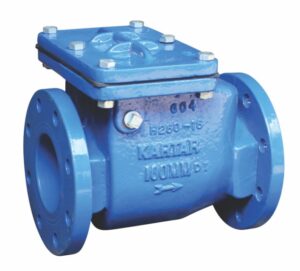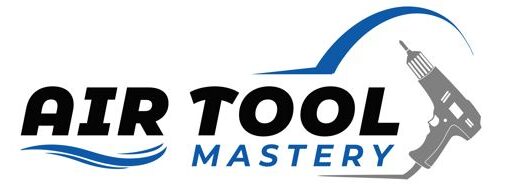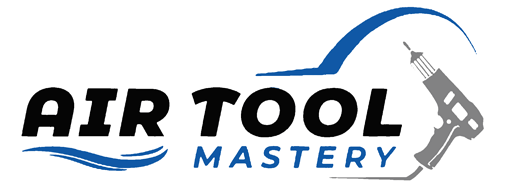Non-return valves are also known as check valves. They are crucial components that are widely used in the field of pneumatics and other fluid power systems. These devices serve a pivotal role in controlling the direction of fluid flow by allowing it to move freely in one direction while preventing any reverse flow.
The fundamental principle is to ensure that the system operates efficiently without the risk of backflow, which could potentially cause damage or disruption. In systems that require specific flow paths or need to maintain certain pressure levels, non-return valves are indispensable. They have a broad range of applications, including water and wastewater systems, heating systems, and industrial processes. This article aims to delve deeper into the technical aspects and working principles of non-return valves.
What Are Valves, and How Do They Work?
I know we have already dived into non-return valves. Before we narrow down further into non-return valves, let’s take a moment and backtrack to what valves, in a general sense, are and how they work.
For starters, a valve is a device that regulates, directs, or controls the flow of a fluid by opening, closing, or obstructing various passageways. Valves play an essential role in maintaining the overall functionality and safety of fluid power systems.
Return Valves vs Non-Return Valves
Now that we know the basics, let’s focus on non-return valves. As their name suggests, they are designed to permit fluid flow in one direction while blocking it in the opposite direction. This is in contrast to return valves, which allow bidirectional flow.
Non-return valves have a very simple yet effective design that consists of a movable flap or disc and a seat. When there is forward flow, the flap opens, allowing fluid to pass through. However, when there is backflow, the flap closes against the seat, preventing any movement.
This mechanism is crucial, especially in systems where backflow could cause damage or disruption. Non-return valves are also designed to operate silently and without any resistance, minimizing energy losses.
Types of Non-Return Valves

Non-return valves come in various types, each with unique features and applications. Some of the most common ones include:
1. Swing-check Valves
Swing-check valves, also known as tilting-disc check valves, are a type of non-return valve that uses a swinging disc to either allow or block fluid flow. Their design is relatively simple, comprising a disc that swings on a hinge or trunnion, functioning the same way a door does on its hinges. The hinge pin is mounted on the top of the valve, allowing the disc to swing freely.
In its default state, the disc hangs at an angle, and when fluid flow is initiated, the pressure pushes the disc, causing it to swing open and allow passage. However, when the fluid flow reverses, the disc swings back to its original position, creating a seal against a seat and stopping the backflow.
3. Lift-Check
Lift check valves are another popular type of non-return valve that uses a disc or cone to control fluid flow. The disc is connected to a stem, which sits on top of a spring. When the forward flow starts, the pressure pushes the disc open against the spring, allowing passage. However, when there is backflow, the spring pushes the disc back into its closed position. Lift-check valves are advantageous as they offer low head loss and can be installed in both vertical and horizontal orientations.
4. Ball Check
Ball check valves, also known as ball-and-spring check valves, use a ball or sphere to control fluid flow. The ball sits in a chamber with an inlet and outlet, held against the seat by a spring. When forward flow occurs, the pressure pushes the ball away from the seat, allowing passage. However, when backflow happens, the spring forces the ball back into its closed position. Ball check valves are commonly used in applications where low flow resistance and a quick response time is required.
5. Diaphragm Check
Diaphragm check valves use a flexible diaphragm to control fluid flow. The diaphragm is attached to a body with an inlet and outlet, forming a seal between them. When forward flow starts, the pressure pushes the diaphragm away from the seat, allowing passage. However, when backflow occurs, the diaphragm returns to its closed position due to its elasticity and prevents reverse flow. Diaphragm check valves are beneficial as they offer an air tight seal against leakage and can handle both high and low pressures. They are commonly used in pharmaceutical and food processing industries.
6. Butterfly Check
Butterfly check valves use a thin disc in the shape of a butterfly to control fluid flow. The disc is held against the seat with a hinge or stopper, allowing it to swing open when forward flow starts and close when backflow occurs. Butterfly check valves offer low head loss and can handle large volumes of fluid, making them suitable for industries such as wastewater treatment and HVAC systems. They are also compact in size, making them ideal for applications with limited space.
7. Lift Check
Lift check valves use a disc or piston to control fluid flow. The disc is held against the seat by a spring and opens when forward flow occurs, allowing passage. When backflow happens, the spring forces the disc back into its closed position, preventing reverse flow. Lift check valves come in a variety of designs such as horizontal and vertical, depending on their intended use and application requirements. They are commonly used in industries where high pressure and high-temperature fluids need to be controlled, such as oil and gas production.
8. Flap Check
Flap check valves use a hinged disc or flap to control fluid flow. The flap is held against the seat by gravity and opens when forward flow starts, allowing passage.
When backflow occurs, the flap returns to its closed position due to gravity and prevents reverse flow. Flap check valves are commonly used in sewage and storm water systems, as well as irrigation and drainage applications.
9. Foot Valves
Foot valves, also known as bottom valves or foot check valves, are used to prevent backflow in suction pipes. They feature a valve at the base of the pipe that is held open by a spring-loaded disc when there is forward flow.
In case the pump stops, the disc closes due to gravity and prevents fluid from flowing back into the pipe. Foot valves are commonly used in industries such as agriculture and firefighting, where reliable and continuous water supply is critical.
What Are Non-Return Valves Made of?

Valves are made from a variety of materials, depending on their intended use, application requirements, and the fluid they control. Some common materials used in non-return valves include stainless steel, brass, PVC, and cast iron. These materials offer different levels of durability, corrosion resistance, and cost-effectiveness to suit various industrial needs. Let’s take a deeper look at each of the materials and the attributes that make them suitable.
1. Stainless Steel
Stainless steel is a popular choice for non-return valves due to its high strength, durability, and corrosion resistance. It is also suitable for use in extreme temperatures and harsh environments. Stainless steel valves are commonly used in industries such as oil and gas, petrochemicals, pharmaceuticals, and food processing.
2. Brass
Brass is a cost-effective and versatile material used in non-return valves. It is suitable for use in a wide range of applications, including water systems, air compressors, and HVAC systems. Brass valves are known for their high tensile strength, resistance to corrosion, and ease of fabrication. They are often used in residential and commercial buildings, irrigation systems, and firefighting equipment.
3. PVC
PVC (polyvinyl chloride) is a lightweight and low-cost material used in non-return valves. It is suitable for use with water, chemicals, and corrosive fluids. PVC valves are known for their high chemical resistance, durability, and affordability. They are widely used in irrigation systems, swimming pools, water treatment plants, and aquariums.
4. Cast Iron
Cast iron is a strong and durable material used in non-return valves for industrial applications. It offers high strength, good corrosion resistance, and low cost compared to other materials such as stainless steel. Cast iron valves are used in steam systems, pumping stations, and wastewater treatment plants.
5. Bronze
Bronze is another corrosion-resistant alloy composed of copper and other elements such as tin, zinc, or lead. It is often used in non-return valves for its high strength and resistance to wear and tear. Bronze valves are commonly used in marine applications, fire protection systems, and industrial processes involving corrosive fluids.
Advantages of Using Non-Return Valves
Well, now that we have discussed the different materials used in non-return valves, let’s talk about their advantages.
Prevents Backflow
The main purpose of a non-return valve is to prevent backflow or reverse flow of fluids. By allowing flow in one direction only, these valves ensure that there is no contamination or mixing of fluids, which can lead to equipment damage and safety hazards. In water systems, backflow can also cause pressure surges and affect water quality.
Reduces Energy Consumption
Non-return valves also help in reducing energy consumption. In systems where there is a backflow of fluids, the pump or compressor has to work harder to push the fluid against the reverse flow. By preventing backflow, non-return valves reduce this extra workload and save energy.
Improves System Efficiency
As non-return valves ensure a continuous flow in one direction, they also improve the overall efficiency of a system. By preventing backflow and reducing pressure surges, these valves help in maintaining stable flow rates and reduce the risk of equipment failure. This leads to better performance and longer life span of the system.
Low Maintenance
Another advantage of using non-return valves is that they require low maintenance. Due to their simple design and fewer moving parts, these valves do not need frequent replacements or repairs. This makes them a cost-effective solution for various applications.
Versatile Applications
Non-return valves have versatile applications and can be used in various industries, including oil and gas, water treatment, power generation, chemical processing, and more. They are suitable for both low and high-pressure systems and can handle a wide range of temperatures.
Common Issues and Solutions
Like any other mechanical component, non-return valves can also encounter issues that can affect their performance and cause system failures. Some of the common issues faced with these valves include:
- Clogging: Dirt, debris, or scaling can build up in the valve, obstructing the flow of fluids. This can lead to leakage and backflow.
- Corrosion: Exposure to corrosive fluids or environmental factors, such as moisture, can cause the valve to rust and deteriorate over time. This can result in leaks and reduced functionality.
- Stuck Valves: In some cases, the valve may fail to close properly due to debris or damage to the sealing surfaces, resulting in backflow and pressure surges.
To avoid these issues, regular maintenance and inspection of non-return valves are necessary. Some solutions that can help address these issues include:
- Cleaning: Depending on the severity of clogging, using a wire brush or chemical cleaning solution can help remove dirt and debris from the valve.
- Coatings: Applying protective coatings, such as paint or epoxy, can help prevent corrosion and extend the lifespan of the valve.
- Replacement: In case of severe damage, replacing the affected parts or the entire valve may be necessary.
Proper selection, installation, and maintenance of non-return valves can help ensure uninterrupted system operations and prevent costly repairs. So it is essential for industries to choose high-quality valves from reputable manufacturers and follow recommended maintenance schedules to keep their systems running smoothly.
With their versatile applications and reliable performance, non-return valves continue to play a crucial role in various industrial processes. Their ability to prevent backflow and protect equipment makes them an indispensable component in many industries.
Conclusion
Non-return valves are essential components in many industrial processes, providing protection against backflow and ensuring efficient system operations. Exposure to corrosive fluids or environmental factors can cause these valves to deteriorate over time, resulting in leaks and reduced functionality. Regular maintenance and inspection are necessary to prevent such issues and ensure the smooth functioning of non-return valves.
With advancements in technology, manufacturers continue to develop new and improved types of non-return valves for various applications, making them an indispensable part of modern industries. So it is crucial for industries to choose high-quality valves from reputable manufacturers and follow recommended maintenance schedules to ensure uninterrupted system operations.

